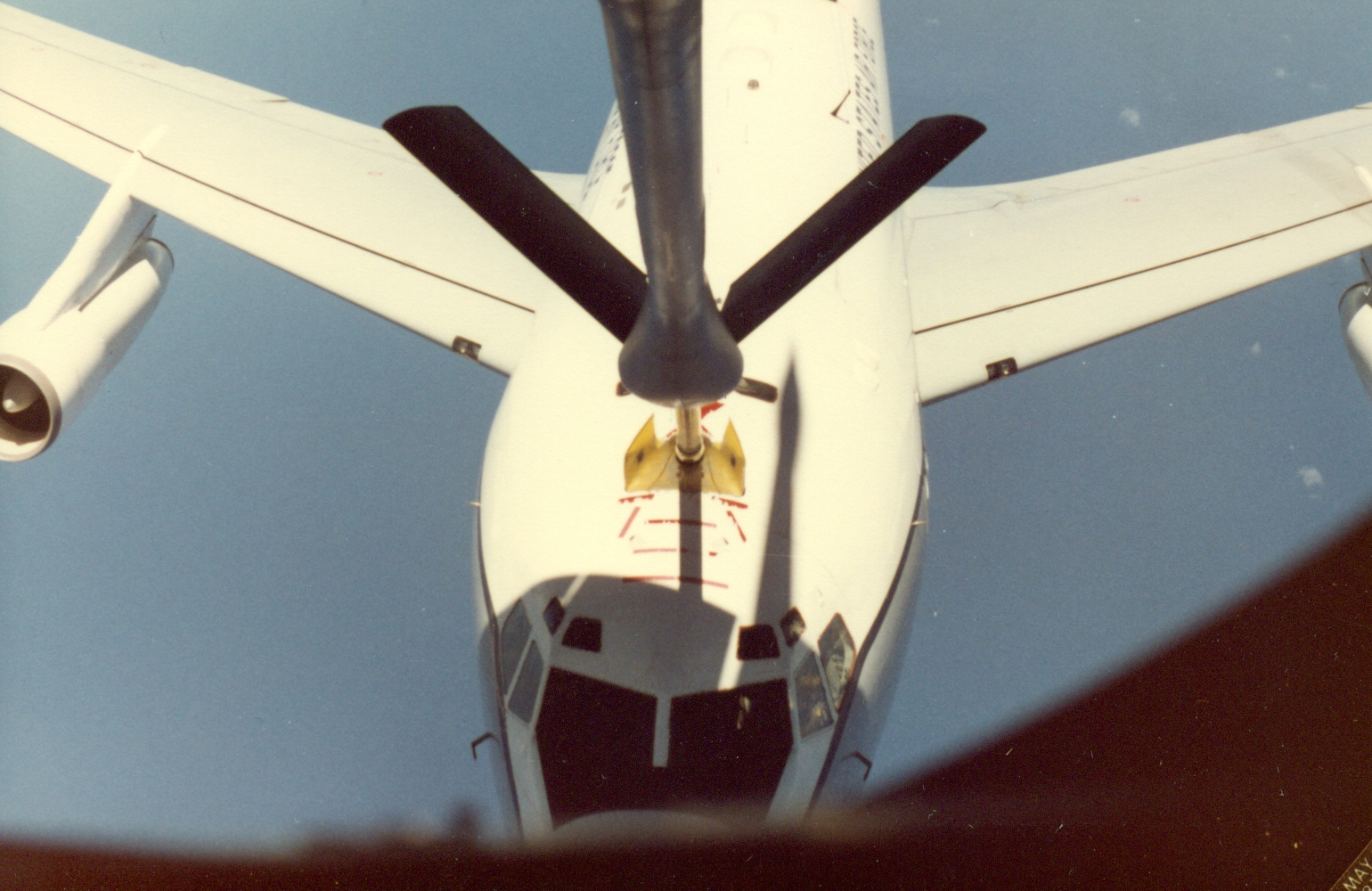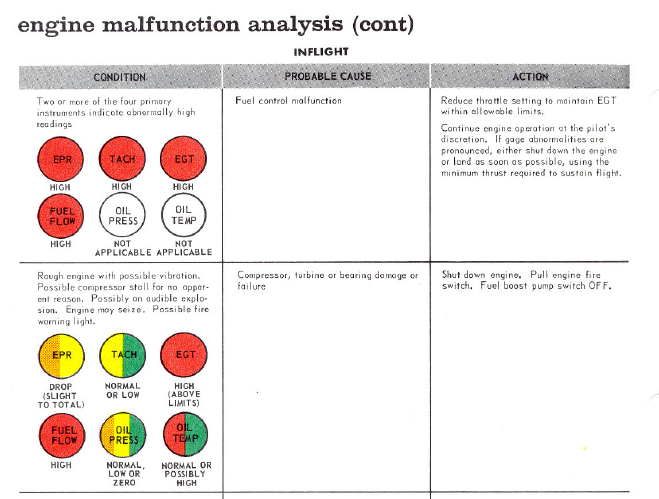Between 1982 and 1985, everyone in our Hawaii squadron had a common kinship, we all had an unbelievable story to tell about the first thing Ann Oh Smith had to say to us when she caught us alone in the airplane.
— James Albright

Updated:
2014-06-25
For me it was doubly so, because it led to one of the most important lessons I had received as a copilot-wanna-be-pilot. The first thing Ann Oh ever said to me when she had the chance was about . . . "Bleeding Internally"
Everyone who knows her has an “Ann Oh” story and it usually begins, “The first time I met Ann you just won’t believe what she said . . .”
Captain Ann O. Smith was a strange one, no doubt about it, and I have my story as well. But my story with Ann O. begins months before she showed up at our squadron’s front door. The squadron was very senior when I got there, mostly Vietnam era lieutenant colonels and majors in their forties biding their time until the airlines were hiring. I showed up, a twenty-six year old lieutenant with one experience none of them had ever had: I had flown with women before.
“No %$#@! can fly this airplane,” they would say, “not while I’m in command.”
“Sure they can,” I would say, “there are good women pilots just like there are bad women pilots. Just like men.”
“Well James,” they answered, “you fly with the damned $#@!”
To my dismay, Captain Ann O. Smith was just as bad as the worst male pilot I had ever flown with. Her check out in the squadron was filled with tales of “the worst approach I’ve ever seen,” “the worst air refueling I’d ever witnessed,” “the worst air sense,” and so on. As a copilot I was witness to none of her training other than a few classroom sessions. Those all seemed to confirm the consensus: she didn’t know her stuff.
But she was even worse in one important respect, she was an emotional disaster area willing to drag her sex into the conversation when it amused her and to cry sexism when it did not.
Back to the “first time I met Ann” stories. The most infamous begins, “on our wedding night my husband dislocated my jaw . . .” and though she told me that one once, it wasn’t my introduction to Ann.
My story begins on my first flight with her. We were orbiting south of Oahu, allowing our Navy passengers to run a communications exercise with their submarines while we in the cockpit fought to stay on course, stay on altitude, and to stay awake. It was a low priority mission. It was her first trip with our primary passengers. Since I had been in the squadron for three months already, Ann would have to rely on my local knowledge about the mission.
Trapped in the two front seats of our Boeing 707 we had little to do after we disconnected from the tanker but monitor the navigation system and talk. Ann could talk for hours without end and it didn’t matter what kind of audience she had. Ten minutes after the tanker left I was talked out. She kept going for about an hour and then fell silent.
For two or three minutes there was blissful quiet. And then she turned from her left seat and looked me in the eye.
“I’m bleeding internally,” she said and then waited for my reaction. Ann Oh was a thin woman with a pale complexion on a face that had no stories to tell. Her eyes were green going on gray and her lips unnaturally thin. That is to say her faced revealed nothing.
“We can land, ma’am. This is a low priority mission and there is no reason for us to fly the remaining five hours.”
“No,” she said calmly, “It’s okay. This happens every month.”
I suppose it might be funny, though her voice revealed no humor. But she outranked me, and on the airplane she was the pilot in command. I just sat back in my seat, silent. She had eleven years in the Air Force to my three, thousands of hours in the Boeing 707 to my one hundred fifty. A copilot’s job is first to support the pilot and second to learn from the pilot. I just sat there silently while she completed her monthly cycle.
An hour later she was out of her seat introducing herself to the Admiral and his staff while I sat looking at two of the six instruments on our number three engine. Each gauge was about an inch and a half in diameter but the case behind each gauge was about a foot long. Inside that case were gears, pulleys, solenoids, and other gizmos that took an analog signal from a wiring bundle and turned that into a mechanical needle. These gauges were unreliable which is why we took any one of them with a grain of salt. But when two gauges both said you had a problem, you probably did.
The Exhaust Gas Temperature, EGT, was reading too high as was the fuel flow. Together they either meant we had a fuel leak inside the engine or a burner can nozzle spraying too much fuel into the engine. Either way it was a problem that could only get worse.
At this point in my Boeing 707 career the squadron’s four airplanes had been very reliable. Maintenance was top notch and engine failures were unheard of. But still I had these two gauges telling me otherwise. I pulled out the flight manual and got the confirmation I needed.
I slowly pulled the number three throttle back to idle while adding power on the other three engines and feeding left rudder to keep the airplane pointed straight. The EGT didn’t move. I rested a finger on each throttle and there was a small tremble in number three. Each throttle was connected to its engine with a steel cable and could telegraph vibration. It wasn't as good as a modern day EVM, Engine Vibration Monitor, but it was all we had.
I called for the flight attendant. “Tell Captain Smith she’s needed in the cockpit.”
“She says she’s busy,” I heard a few minutes later. The two noncompliant needles were creeping ever higher. It had been five minutes since I first noticed them. But did I notice them in time?
“Pull her aside,” I told the flight attendant, “so that the passengers don’t hear, and tell her the copilot is about to shut down an engine.”
That did the trick. Within two minutes she was back in her seat looking at the EGT and fuel flow. “This is nothing to worry about,” she said, “I’ve seen this lots of times.”
“The book says shut it down,” I said.
She studied the page I had opened. “It says it is the pilot’s discretion and my discretion is that we don’t need to shut it down.”
“That’s the top block. The bottom block says shut it down.”
She studied the page a little longer. “I’m not shutting it down,” she said, “if you want to shut it down, go ahead. But it is on your responsibility.”
Of course the thought is ridiculous: copilots have no responsibility. What was the risk? At one end of the spectrum, the gauges were lying and had to be fixed. Our passengers would lose the flight and we would lose the flying time. On the other end, the engine was about to explode into a million pieces, taking with it the airplane, and everyone on board.
I shut the engine down. We declared an emergency and got priority landing treatment back at Honolulu. The next week the chief of maintenance said half the burner cans were cooked and one was spewing raw fuel into the cowling.
"Burner can three," he said, "was bleeding internally and that fuel was all over the hot section of the engine. You were lucky it didn't blow itself right off the wing."
Bleeding internally. It was a fitting start to a string of failures that would give our squadron the name: “The Engine a Month Club.”
I heard, years later, that Captain Ann Oh submitted herself for an air medal and got it.
Note: I have flown with many women before and since. Ann Oh is the only one I would not care to fly with again.


